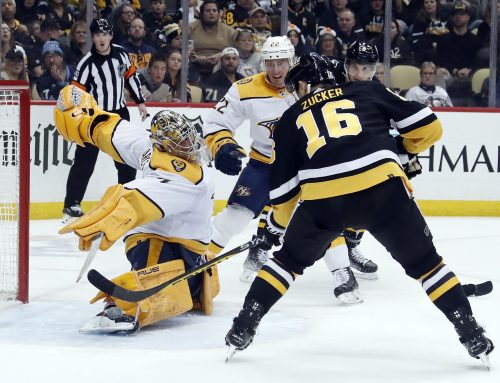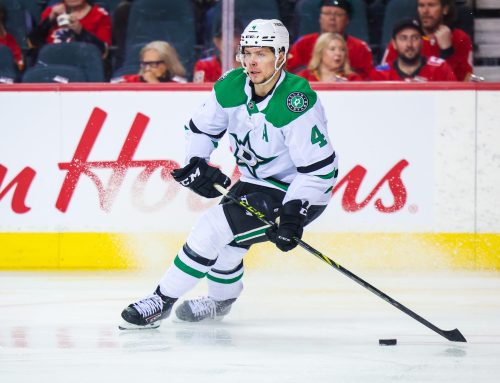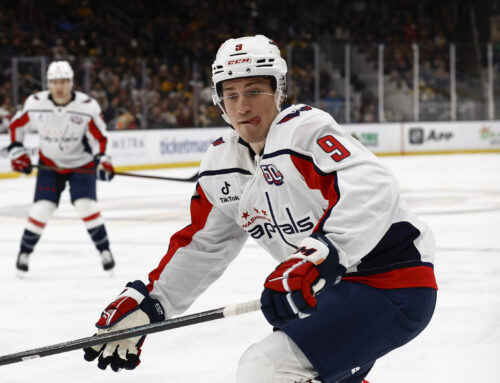
****
With the William Nylander saga ending one way or another in two days, alongside recent signings of Jacob Chychrun, Nick Ritchie, and Alex Tuch, it seems like a good time to review the Restricted Free Agents for the coming season.
****
First off, I wanted to touch on Ron Hextall’s dismissal from the Philadelphia Flyers. I think he had done a very solid job managing the cap for the Flyers, some of his trades may have been questionable, and there is really only so much you can do about the Flyers’ goalie curse (even Gritty couldn’t scare that off). Hextall came on just after Andrew McDonald was signed to his anchor contract, but managed to lock up players such as Sean Couturier, Shayne Gostisbehere, Jakub Voracek, and others to quality contracts. I was fairly optimistic that the Flyers would be able to lock up Ivan Provorov to a solid contract, something in the range of what Matt Dumba signed last offseason, which is already looking like a steal. With the uncertainty of a new GM, I am much less optimistic about this upcoming contract.
Back when Aaron Ekblad signed his current extension, he was a quickly growing prospect with a career high of 39-points, while logging some tough minutes. His contract was supposed to be one he was going to grow into, but it was just so large from the start, that Ekblad really didn’t stand much of a chance. Provorov finds himself in what may turn into a similar situation. He deserves a contract similar to Ekblad’s but if he gets it, his value will plummet, as will the Flyers’ ability to manage their team through the salary cap.
****
Secondly, before getting into the RFAs, we may have undervalued Tom Wilson by a smidge. No one was undervaluing him for his hits and PIM contributions, but his scoring has hit a new level. With the comfort of a big contract, he can play his game without worrying he will be kicked off the top unit, and he is thriving with that style. Through eight games he has 12 points, 19 hits, 11 penalty minutes. As of Tuesday afternoon, there were four players who had more points, hits and penalty minutes than games played (minimum five). Tom Wilson is of course one, while the other three are Matthew Tkachuk, Brady Tkachuk, and Auston Watson. Watson was bumped up the lineup due to injuries in Nashville and won’t finish with a point-per-game. The other three however, appear to be your multi-category studs, all on bargain contracts for cap leagues counting the three above stats. With skilled linemates around, it seems like we do have to bump up Wilson’s scoring expectations. Not necessarily over a point-per-game, but into the 60+ range, rather than 40-50.
****
Now we’re onto the Restricted Free Agents.
Forwards
There are two categories here, those coming off of their entry-level contracts, and those whose bridge deals are coming to a close and need to ink their long-term money contract. Nikita Kucherov already got his, and now William Karlsson, Andre Burakovsky and Teuvo Teravainen have theirs coming as well, to varying degrees. That isn’t exciting though, we know what’s coming, and it’s easier to predict. The fun ones, and the toughest to manage for your fantasy squads, can be those who ink their second contracts, and decide to go long-term right away instead of opting for the bridge deal. Many big names will be faced with this decision this summer, among them Auston Matthews, Mitch Marner, Sebastian Aho, Kyle Connor, Patrik Laine, Matthew Tkachuk, Brock Boeser, Timo Meier, Jake Guentzel, and many more.
When trying to predict these things, two factors stand out. One, is there a possible discrepancy between what the team and the player view as the eventual upside? And two, what does the cap situation of the team hint at, based on current vs future space, and precedent contracts. Some like the Leafs’ and Jets’ duos are going to get their long-term deals, while others such as Meier, Guentzel and perhaps even Aho, will take a few less years for now, betting on an even better case for a large contract a few years down the line. When in doubt, always expect the large contract, and be happy with less. Managing these contracts can be the key between contenders and pretenders in cap leagues.
In the case of point one, Sebastian Aho looks to only be scratching the surface of his potential, and a 100-point season may be in the cards one of these years. He may see that upside and want more than the Hurricanes would offer for now. However, in the interest of point two, the Hurricanes have many young guns who will need to be locked up over the next three years, meaning some cost certainty would likely be appreciated by both sides. As a result, I would hedge that Aho’s eventual extension is no less than seven years, and no less than $55 million (the prediction model says $8.4 million per year for eight years).
The bottom line for all of these negotiations, is what happens with Nylander. That sets the entire market, and the strategies on both sides moving forward for the next few years.
Defencemen
The value of defencemen fluctuates greatly based on the settings of each fantasy league. The value of RFAs then fluctuates even more due to the uncertainty of contract sizes, just like the forwards. With the reality around the league that defence is a harder position to fill, most continue to get locked up to longer deals at a higher rate than the forwards. The exception remains Jacob Trouba, who has signed two contracts in the last three offseasons, and should make it three in four this summer. The Winnipeg Jets and Trouba are likely looking to sign a long-term extension, with Trouba eligible for unrestricted free-agency as early as the summer of 2020.
After Jakob Chychrun and Trouba, expect others to follow suit, such as Zach Werenski, Neal Pionk, Cody Ceci, Will Butcher, Charlie McAvoy, and more. Chychrun signed a six-year deal with a $4.6 million AAV despite only having 118 NHL games under his belt. Unlike forwards, the defencemen get paid on the chance that they hit their upside. Do not expect to find your bargains here.
Goalies
I was expecting this to be a short section without many occupants, however there were more names than I expected. Seven goalies that qualify for RFA status this summer have played 5 or more games to this point.
David Rittich, Joonas Korpisalo, Linus Ullmark, Garret Sparks, Laurent Brossoit, Malcolm Subban, Cal Petersen, have all provided more than fantasy owners were expecting thus far, however this trend doesn’t bode well for their future value. There are limited starting goalie slots in the NHL, and with most starting roles accounted for, and a high number of quality backups rising up to meet the challenge, this is a place where many NHL GMs choose to save some cap. As a result, backups that sign contracts like Mike Condon did often end up just being anchors, while the names above take over as more economical options behind the bench.
Looking ahead to the 2020 RFA goalie class, we could see players such as Alexandar Georgiev, Jon Gillies, Callum Booth, and Tristan Jarry pay bigger dividends than established backups. These players see their stocks increase very quickly, and are worth inquiring about now for leagues with an established minors system.
As a benchmark for backup goalie contracts, look no further than the two signed by Juuse Saros and Aaron Dell last season. With a small cap increase, expect an AAV around $2 million, on a two or three-year deal. Compare that to the $650,000 that some of them are making this season, and you can see why GMs decide that someone only playing in 15 games per season is the best place to cut cap costs.
****
Previous Capped articles:
First Quarter of 2018 vs First Quarter of 2017 – Trends
Looking Ahead to the 2019 UFA Class
****
All cap related info is courtesy of Capfriendly.
That caps off this week’s article, thanks for reading. As always, you can find me on twitter @alexdmaclean.





 EDM
EDM FLA
FLA CHI
CHI ANA
ANA L.A
L.A MTL
MTL
